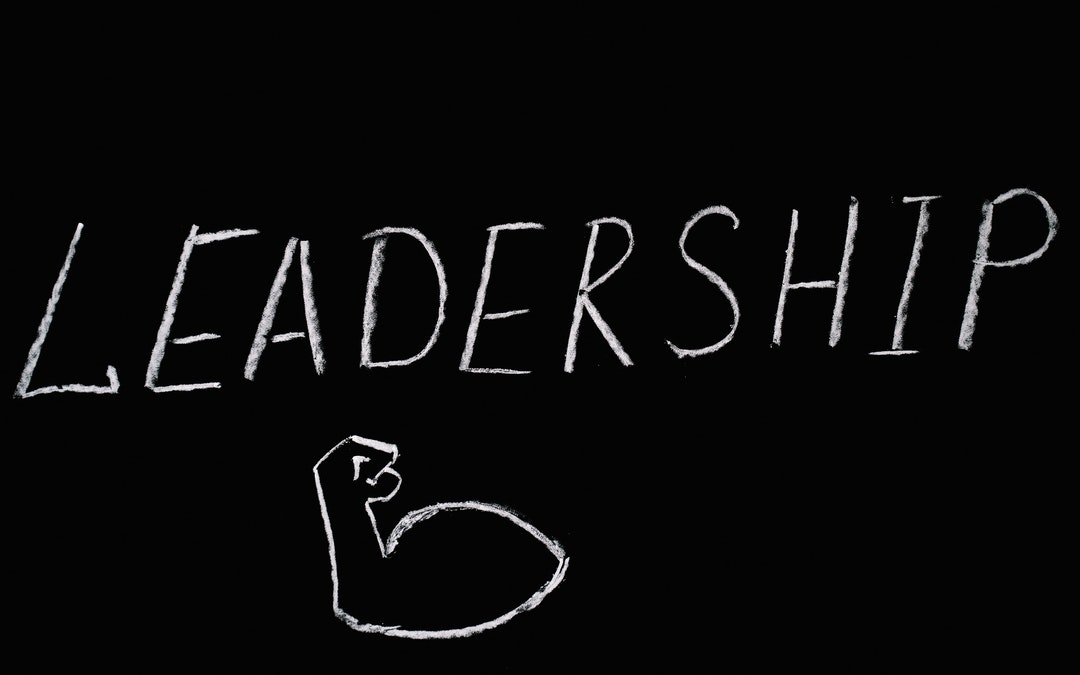Many successful entrepreneurs and executives use educational leadership principles to help them succeed. Educational leadership can be applied in virtually any other field, too, such as medicine, engineering, and coaching [1]. To stand out, educational leadership gives you an edge over your competition. In this article, we will uncover the meaning of educational leadership, outline its benefits and drawbacks, and show you how to implement it in your daily life.
To get the most out of this exploration, consider taking the HIGH5 strengths assessment. By understanding your unique strengths and those of your team or organization, you can more effectively embody the qualities of an educational leader and create an environment that nurtures growth, collaboration, and collective success.
What is educational leadership?
Educational leadership is the practice of guiding, inspiring, and influencing others to foster growth and development. It involves setting clear goals, creating a positive learning environment, and empowering both students and educators to achieve their full potential. Educational leaders prioritize collaboration, innovation, and inclusivity to drive success. Their role is to serve as a bridge between the needs of students, educators, and the community, ensuring everyone involved can thrive.
It’s crucial to understand your own strengths and those of your team or organization as a leader. The HIGH5 strengths assessment can provide invaluable insights into these areas, enabling you to leverage individual and collective strengths more effectively.

What is the role of educational leadership?
The role of educational leadership is to ensure a harmonious and supportive environment that encourages learning, creativity, and personal growth. Educational leaders act as mentors, guide both students and educators, and facilitate open communication between families and the institution. Their aim is to build a culture of trust, inclusivity, and continuous improvement.
Characteristics and qualities of an educational leader
Every leader has their own unique qualities. The same is true with all educational leaders. However, some traits make educational leaders stand out from the crowd.
- Vision
- Empathy
- Analytics skills
- Experience
- Communication prowess
- Passion for education
- Commitment to long-term improvement
- Teamwork
- Lifelong learners
Pro Tip From HIGH5
To cultivate the key characteristics of an educational leader, such as encouraging growth and positivity, start by understanding your own strengths and those of your team using the HIGH5 strengths assessment. This knowledge can help you tailor your approach to individual needs, leveraging each person’s unique talents while also identifying areas for development. Additionally, celebrate small wins and progress, reinforcing a growth mindset and fostering a positive, collaborative environment.
Educational leadership examples
Educational leaders can bring a breath of fresh air to their teams. In contrast with more demanding and self-centered leadership types, such as the authoritarian style, they can help a team focus on their collective goals in a more gentle manner. Additionally, they could propel a field forward with their insights and willingness to share information with others. Health care professionals such as surgeons doctors, and nurses can harness educational leadership as well [2].
This is especially true if you choose to pursue academia. Teaching residents requires patience and a family-centered approach. Medical researchers can bring educational leadership into their labs by willingly shading information often and ensuring their young staff are comfortable. If you’d like to see the best jobs for educational leaders, keep reading.

Best jobs for educational leadership
As previously mentioned, there are many fields where educational leadership principles can help you succeed. However, some jobs are more in-demand and well-suited to this leadership approach than others. A few of the best jobs for educational leaders include:
- Teacher
- Principal
- Counselor
- Therapist
- Medical researcher
- Dean
- Physician in academia
- Superintendent
- Social worker

Advantages and disadvantages of educational leadership
There is no such thing as a perfect leadership approach. Every team is different, and the way you champion educational leadership must adapt to the strengths of your team. What are the pros and cons of educational leadership, then?
5 pros of educational leadership
- Promotes a positive view of the leader and ensures that team members are comfortable speaking to the leader
- Takes a holistic approach to growth and ensures employees and students can recognize their strengths
- Keeps the entire family involved in the individual’s learning (or even work)
- Establishes an inclusive and supportive environment where people are free to be themselves and find creative ways to solve problems
- Creates a sense of teamwork and sets goals that keep everyone united
5 cons of educational leadership
- Experiencing burnout as some may take advantage of a leader’s kindness and generosity
- Exerting more effort than simply focusing on school or a proper work-life balance
- Becoming too complacent with the way students are to ensure their feelings are not hurt; may not be able to provide the ‘push’ some pupils need
- Resistant to change their approach towards their goals
- Feeling too connected to students or employees to the point of depression or anxiety when they leave their grade or quit their job
Pro Tip From HIGH5
To maximize the advantages of an educational leadership approach, such as promoting a positive view and establishing an inclusive environment, leverage the insights from the HIGH5 strengths assessment. By understanding the unique strengths of your team or organization, you can create opportunities for everyone to shine, fostering a sense of belonging and reducing the risk of individuals feeling overlooked or undervalued.
Who is a good example of an educational leader?
Some of the most famous educational leaders in the world include:
- Sal Khan
- Maria Montessori
- Booker T. Washington
- Erin Gruwell
- Richard Weissbourd
- Marva Collins
- Jaime Escalante
- Anne Sullivan
- Albert Einstein

5 amazing books about educational leadership style
1. The Principal: Three Keys to Maximizing Impact by Michael Fullan
Principals play a key role in ensuring the school environment is safe, productive, and fair [3]. They also set the tone for students’ academic success. Take it from an experienced educator and administrator Michael Fullan. Fullan understands that the impact teachers have on their students reaches beyond the classroom. He teaches you strategies to encourage growth at home, make sure your impact is positive, what exactly makes a teacher successful, and how to develop strong bonds with your students.
2. How Children Succeed: Grit, Curiosity, and the Hidden Power of Character by Paul Tough
In How Children Succeed, Paul Tough reveals how teachers can help their students develop optimism, conscientiousness, and grit [4]. After pupils acquire these qualities, they can accomplish their academic goals (such as acquiring a high GPA or honors diploma) and grow into hard-working and curious individuals for life.
3. What Works in Schools: Translating Research Into Action by Robert J. Marzano
Teachers are typically big fans of data. In this book, Robert Marzano lists a plethora of the most well-done research answering the question: what type of teaching method works? When you see the data and insights, which are based on 35 years of research, you can implement the most effective strategies into your teaching career. Then, you can ensure students are meeting their goals and being productive.
4. Cultivating Genius: An Equity Framework for Culturally and Historically Responsive Literacy by Gholdy Muhammad
Cultivating Genius reveals the many methods today’s top teachers use to keep students’ backgrounds and emotions in mind when discussing sensitive topics. Gholdy Muhammad shares how to accomplish this. With these insights, students can learn to treat others with respect, be proud of their culture, and think critically about oppression in today’s world.
5. Lead Like a Pirate: Make School Amazing for Your Students and Staff by Shelley Burgess and Beth Houf
Lead Like a Pirate teaches school administrators and principals about ways to boost passion and enthusiasm in all staff members [5]. This helps create the united, team-based approach that educational leaders truly care about. Plus, you will learn to use a positive mindset and build rapport, two bonus skills that will help you as a leader.
Educational leadership FAQ
How do you become a successful educational leader?
Success means something different for every leader. However, educational leaders ultimately have very similar goals. They want the educational industry to serve and benefit students. How? Through innovation, inclusion, equity, and a family-based approach. Involve parents in helping their child learn at home. Speak to pupils one-on-one to show you care about them and answer any questions they may have. Encourage diversity and include different perspectives in your lesson plan. And, to go above and beyond, try developing a technology that gives kids more access to education.
What are the functions of educational leadership?
The main functions of educational leadership include setting goals, managing resources, supporting staff development, fostering communication, and building a culture of continuous improvement.
What are the most important components of educational leadership?
The key components of educational leadership are vision, communication, collaboration, and a commitment to long-term success. These elements help create an inclusive, supportive environment where everyone can thrive.
References:
- Groenewald, Elma & Groenewald, Coenrad Adolph & Dela Cruz, Ralph Arjay & Uy, Francisca & Kilag, Osias Kit & Villaver, Marlon. (2024). Navigating Educational Leadership: Challenges, Styles, and Impacts – A Systematic Review. 1. 262-267. ResearchGate.
- Maykel J. A. (2013). Leadership in surgery. Clinics in colon and rectal surgery, 26(4), 254–258. https://doi.org/10.1055/s-0033-1356727.
- Pardosi, J., & Utari, T. I. (2021). Effective principal leadership behaviors to improve the teacher performance and the student achievement. F1000Research, 10, 465. https://doi.org/10.12688/f1000research.51549.2.
- Tough, P. (2014). How Children Succeed. Paul Tough. https://paultough.com/how-children-succeed.
- Novak, C. (2018, July 20). Lead Like a Pirate | leadership secrets from the golden age of buccaneers. Chocolate Pizza. https://chocolatepizza.com/blog/lead-like.





